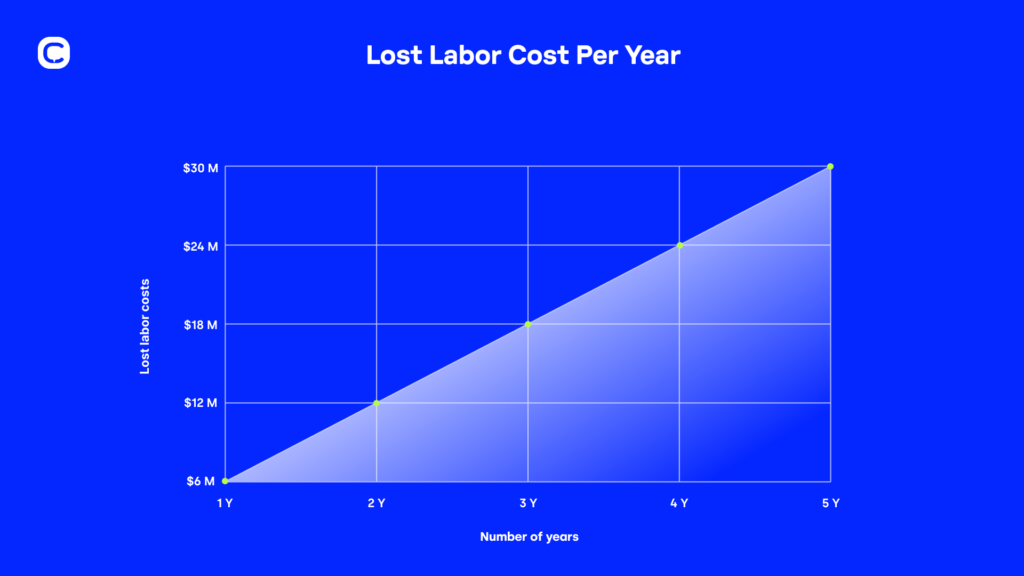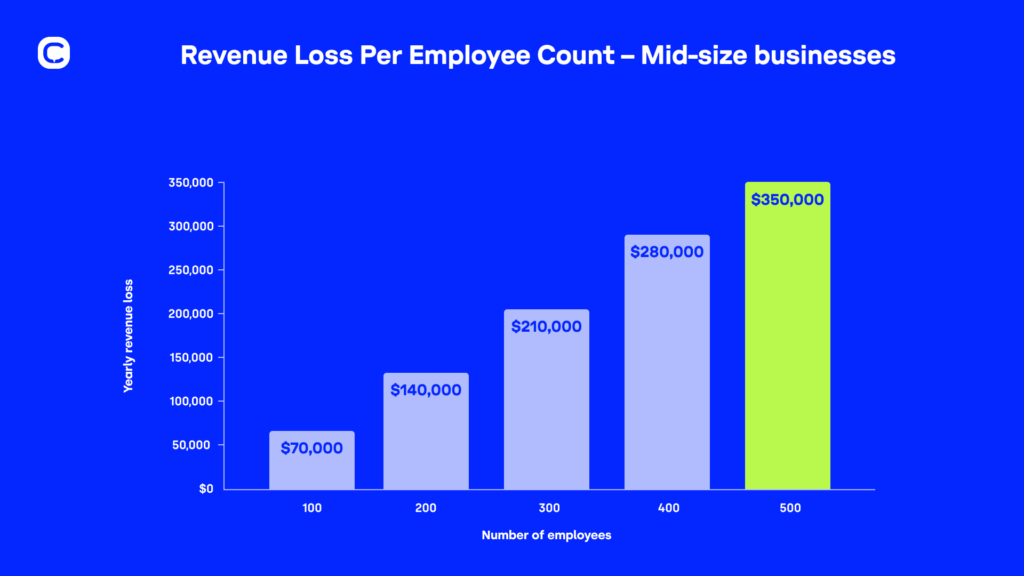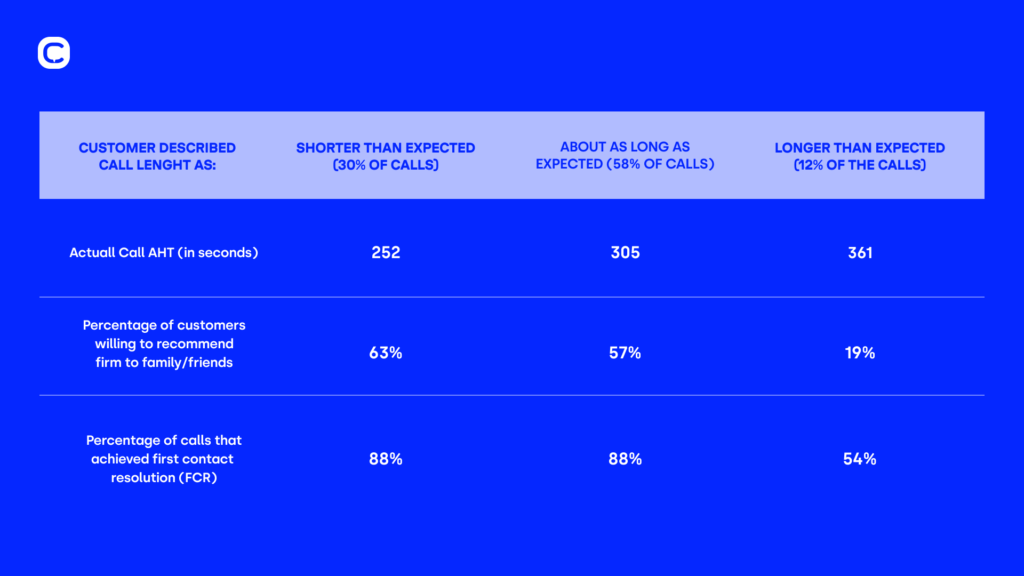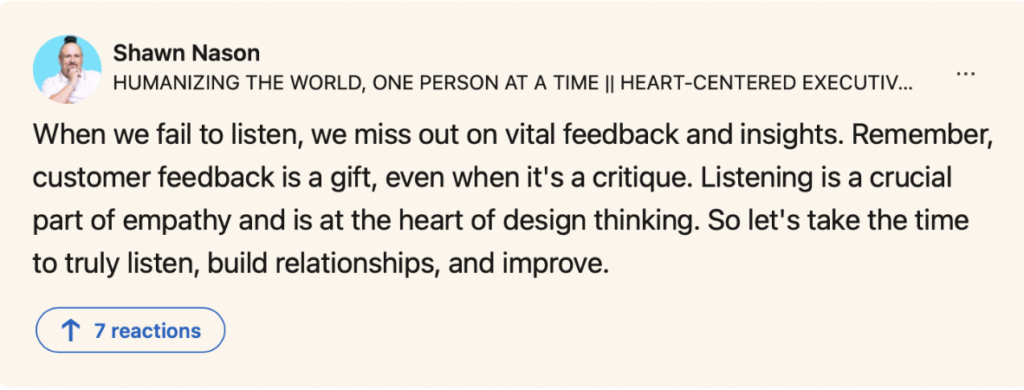You May Never Hear From 42% of Your Customers Again Due to Poor Call Quality

It’s intriguing how many customers mark a bad customer service experience as the number one reason for their churn. At CloudTalk, we found it so intriguing that we decided to investigate. It turned out that 42% of participants are not likely to call a company’s customer support again after facing audio quality issues, or are determined to never call back at all.
And there’s more ⬇️
Every 5th Business Churns To Seek Better Call Quality. You May Want To Follow
Recently, we analyzed the most frequent roadblocks our customers encounter. A big part of these roadblocks has to do with call quality — our customer base confirms that.
Approximately every 5th client we acquire aims for better sound, stronger connectivity, and fewer dropped calls. Businesses simply want to hear their customers loud and clear, and who can blame them? Poor call quality could be costing you as much as $6,000,000 each year in lost labor.

So, let’s start digging into some of those audio quality roadblocks and uncovering what kind of damage they can truly cause:
Distracted Agents Cost You Millions Each Year
Attrition in contact centers reaches over 40% on average. In fact, according to the 2020 Contact Center Pipeline Survey, attrition is the number 1 challenge in contact centers.
How big of a role can call quality possibly play in this? A key role, actually, and we have the numbers to prove it.
The market research firm IPSOS and audio brand EPOS conducted a survey that confirmed that 95% of workers lose concentration and efficiency solely due to persistent audio issues, and 69% have spent more time on their tasks because of sound problems.
According to the EPOS study, 18% of respondents even missed key deadlines due to complications caused by bad call quality – bad audio costs them 29 minutes per week, which adds up to almost 2 hours each month, and 24 hours per year – whole 3 working days wasted on asking: “Excuse me, what did you say?”Now, let’s translate it to business – you can lose over $700 per employee per year, considering average US wages. If you owe a large company, this adds up to millions of dollars in annual productivity losses.

Poor Sound Quality Makes You Seem Less Intelligent
Fascinating (and heavily correlating) studies were conducted by the University of Southern California (USC) and the Australian National University (ANU).
Let’s start with the USC study. The university presented their participants with two YouTube videos – both conference events. One of the videos had excellent call quality, the other one was lacking. The results took researchers by surprise – the speaker in the bad sound quality video was not only seen as less credible and less engaging, participants even perceived him to be less intelligent.
While the ANU study was proving the same point, they used an identical interview with two different sound qualities. After listening to the bad audio quality interview, respondents not only didn’t enjoy listening to it, they expressed negative opinions on the study presented in the interview.
What applies to YouTube videos and voice interviews may very well apply to your business, too. A bad first impression makes it very hard to attract and retain clients — something to keep in mind.
Metrics Prove The Point: Clear Audio Increases AHT by 27%
Telling you which KPIs you should measure to determine call quality would be silly, as well as explaining how to do it.
But we may surprise you with some data that might have slipped your attention:
The delicate balance between delivering quality service and how quickly you can do it translated into the most important metric you can measure in your contact center – Average Handle Time. You want to provide the best experience while minimizing AHT, and here is where call quality plays a pivotal role.
While collecting information for this blog, we stumbled upon another fascinating research conducted by McIntosh Associates.
The study is based on 5,000 cross-industry call observations and over 2,000 customer surveys to scientifically describe a correlation between Average Handle Time, First Call Resolution, and customer loyalty → with only +/- 2% error margin.
McIntosh categorized calls by customers’ call length perception, comparing this perception to an actual AHT, and here’s what they found out:

The higher the perceived Average Handle Time, the lower the loyalty and First Call Resolution rate.
In conclusion, poor call quality resulted in a 27% increase in AHT. The graph proves that efficiency and quality aren’t stand-alone variables. An efficient interaction is a quality interaction.
Call Quality is a Dynamic Value – It Must Grow With You
When searching for ways to improve call quality, remember one thing – you need to do more than find software that prides itself on crystal-clear calls.
Frequently, a decline in call quality happens because executives are struggling to optimize the customer experience at scale. You need to search for a solution that is flexible enough to serve your growing call quality requirements.
If your calling software cannot follow your growth, increasing call volumes will lead to poor call quality and loss of customers. That’s a simple equation.
Let’s take a practical example: expanding to new markets. As you scale, you’re probably entering a lot of new markets, right? That means more countries to cover. The call quality of your current provider might have been good enough in your region, but will it be good enough beyond your local borders? Overseas? On the other side of the globe? You get the point.
Not treating call quality as a dynamic factor that should constantly improve as your business grows has a simple but devastating result. Whether the audio is spotty or the call disconnects completely, your agents will not hear your customers.
Besides missing sales opportunities and partnerships, you are hindering company growth, increasing operational costs, and as you could see earlier, decreasing customer loyalty by as much as 80%.
The consequence can even be something as minor as missing out on useful customer feedback that you’d get if you only could listen – as the founder and CEO of the design firm MOFI Shawn Nason explains in his LinkedIn post:

USE CASE: How Better Call Quality Made a $20M Company 20% More Efficient
If we are to connect the importance of call quality with a real name, we could do worse than think of a company that managed to increase its revenue by 250% since its $34 million Series A funding back in 2020. We’re talking about PlanRadar – a leading European digital field management platform, and our valued client.
In 2022, PlanRadar secured its Series B investment – a value of $70M. The company now serves over 120,000 clients in more than 65 countries, and makes around 360 000 inbound and outbound calls per quarter, translating into 210,000 minutes talking to customers and leads.
How do they connect to call quality, you may ask? The co-founder and co-SEO Sander van de Rijdt considers the user experience and excellent assistance one of the key elements of their success: “If you give customers an intuitive platform that makes their jobs easier, and combine it with gold-standard support services, then they are eager to embrace cutting-edge solutions,” he said for an EU-startups platform.
Another co-founder and co-CEO, Ibrahim Imam, claims that call quality was one of the leading factors for their 20% work efficiency increase. Consider his words from our case study interview:
“First impressions matter. An initial conversation with a potential client can determine whether they choose your service or not. If the call suffers from lag and jitter, a prospect will likely choose another provider.”
Ibrahim Imam, co-founder and co-CEO of PlanRadar
Read CloudTalk – PlanRadar Case Study
Before You Go, There’s Something Else You Should Know…
By now, you’ve probably realized that anything you can add to your customer experience that makes the first impression memorable, is probably going to drive loyalty — and call quality is a big part of that.
With nearly two-thirds of customers wanting to reach brands by phone and almost 67% saying instant engagement is a key factor in purchasing goods and services, maintaining high levels of customer satisfaction is not just about answering demand — It’s a viable commercial strategy that will increase revenue and retention.
Ultimately, it wouldn’t be very smart to develop a business calling software without being able to provide exceptional CX ourselves. This is why over the years we’ve focused on making sure that both our customers (and their customers!) can benefit from exceptional call quality. How exceptional? As much as 95% of customers gave us the highest rating for incoming call quality and 93% for outgoing call quality.
Not bad, right?
So…
















